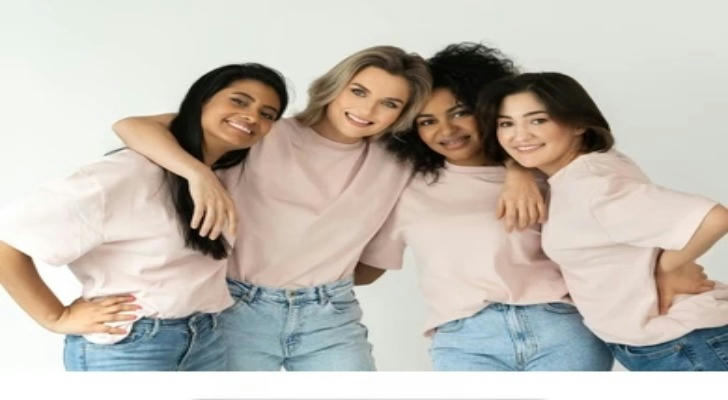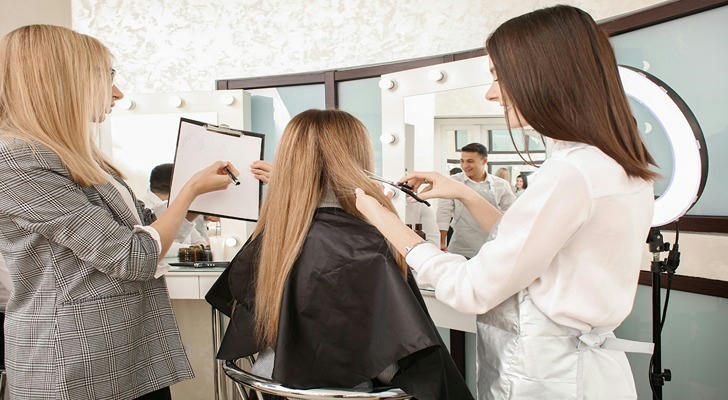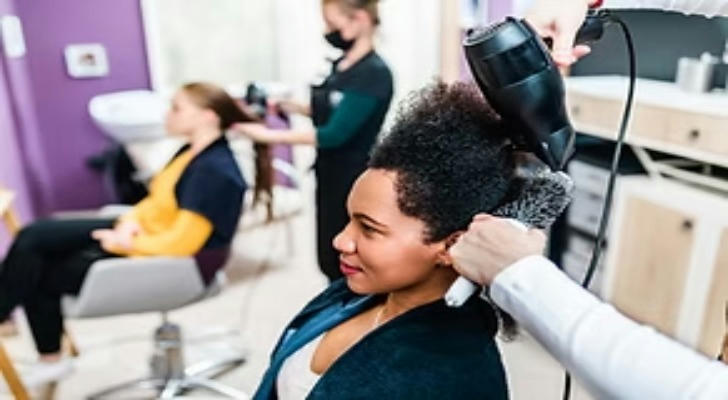Hairstyle stories in multiculturalism: the combination of traditions and trends of different ethnic groups
The United States is a country with diverse cultures, and each cultural background has left a deep mark on the hairdressing industry. From African-American dreadlocks and cornrows, to Asian straight hair care, Latin American thick wavy curls, to the traditional exquisite European styling, the hairstyles of different ethnic groups not only reflect aesthetic preferences, but also carry identity, tradition and self-identity.

In this context, the hairdressing industry is no longer just a single technical output, but a communication place for understanding, respecting and integrating diverse cultures. This article will explore how hairdressers understand the hairstyle needs of various cultural backgrounds in an environment where multiple ethnic groups coexist, and how to integrate modern trends while retaining traditions to create a styling experience for customers that respects roots and is full of modernity.
Ⅰ. The cultural significance behind hair
Hair has never been just "a part of the body". In many cultures, hairstyle is a language and a form of identity expression.
1. Texture and history of African culture
The natural curly hair of African Americans was suppressed in history because it did not meet the "mainstream standards", but now natural hair and traditional styles such as cornrows and locs are gradually becoming a symbol of pride.
These hairstyles are not only complex and exquisite, but also contain ethnic identity, community belonging and even the spirit of resistance.
2. Straightness and simplicity of Asian culture
Many Asian groups take the natural straightness of hair as the basis of aesthetics, and prefer smooth and shiny hairstyles. Techniques such as straightening care and layered haircuts are quite common among this group of people.
In addition, the "student head" in East Asian culture and traditional wedding styles such as Chinese buns also reflect the close relationship between hair and rituals and rules.
3. Passion and waves of Latin American culture
Latin Americans usually have thick natural curly or wavy hair, and they prefer styles that show movement and heaviness. Techniques such as hair dyeing, highlighting and zoning are widely used in this group.
In cultures such as Mexico, Cuba and Puerto Rico, hair is often seen as an extension of charm and female power, and exquisite makeup and hair are part of daily rituals.
4. Styling traditions of European culture
Whether it is British elegance, French naturalness, or Italian wildness, European people have a unique pursuit of the shaping and contour of hairstyles. Blow-drying, low ponytails, braiding, etc. are often associated with professional and social occasions in their cultural context.

Ⅱ. Cultural sensitivity and professional judgment in service
When facing customers from different cultural backgrounds, professional hairdressers need not only technical skills, but also respect and understanding.
1. Do not judge hairstyles by "uniform standards"
In the past, in some work environments, African-American hairstyles were considered "unprofessional", which was obviously a cultural prejudice. Today, more and more salons are beginning to realize that no hairstyle should be "disciplined", it only needs to express personal identity and comfort.
Hairdressers should encourage clients to base their aesthetics on their own culture rather than catering to certain stereotypes.
2. Make technical adjustments based on hair quality
Natural curly hair requires more moisturizing and elastic care
Fine and soft hair needs to avoid heavy styling products
Dyeing and perming methods need to be adjusted according to different hair scale structures
This not only reflects professionalism, but also avoids discomfort or disappointment for customers after the service.
3. Provide cultural adaptation suggestions
During the service, if the customer is preparing for a cultural festival (such as an Indian wedding, a Korean coming-of-age ceremony, etc.), the hairdresser can take the initiative to understand their traditional styling requirements, and incorporate modern designs on this basis, reflecting the perfect fusion of "cultural identity + fashion elements".

Ⅲ. Case story: Cultural integration moments in the salon
[Protagonist] Nia - an African-American high school teacher
Nia teaches in Los Angeles and is used to braiding her hair into delicate cornrows, changing her style every two weeks. She has long chosen a salon run by a Korean, because the hairdresser Jenny there not only mastered the corn braiding technique, but also often discussed with her the history and significance of African hairstyle culture.
Before a parent-teacher meeting, Nia wanted to try a "fusion style" look - traditional corn braids with wavy wigs wrapped around them. Jenny designed a half-braided, half-open hairstyle for her, allowing Nia to have dynamic lines while maintaining tradition.
"Jenny not only braids hair, but she also listens to my stories about my mother's hair style when she was a child. For me, it is not only a styling, but more like a cultural exchange."
——Nia
This kind of "cultural listening + technology output" service model makes the salon an inclusive space with diverse perspectives.
Ⅳ. Trends in the hairdressing industry from a multicultural perspective
1. Multicultural training has become a trend
Nowadays, many beauty schools and hairdressing education courses have included "cross-cultural hairdressing skills" as compulsory content. Understanding different hair qualities, styling concepts and cultural backgrounds has become a basic quality of the new generation of hairdressers.
2. Salon services are more multilingual and cultural
Many salons in big cities hire employees from different ethnic groups to provide more friendly services. For example, they provide Spanish communication, provide African-friendly care products, set up cultural festival theme days, etc.
3. Content creation promotes cultural understanding
On social media platforms such as YouTube, TikTok, and Instagram, many hair bloggers tell their cultural hairstyle journeys through videos to help more people understand: there is a cultural story behind every hairstyle.
Hairdressing is not only a styling art, but also a cultural bridge.
